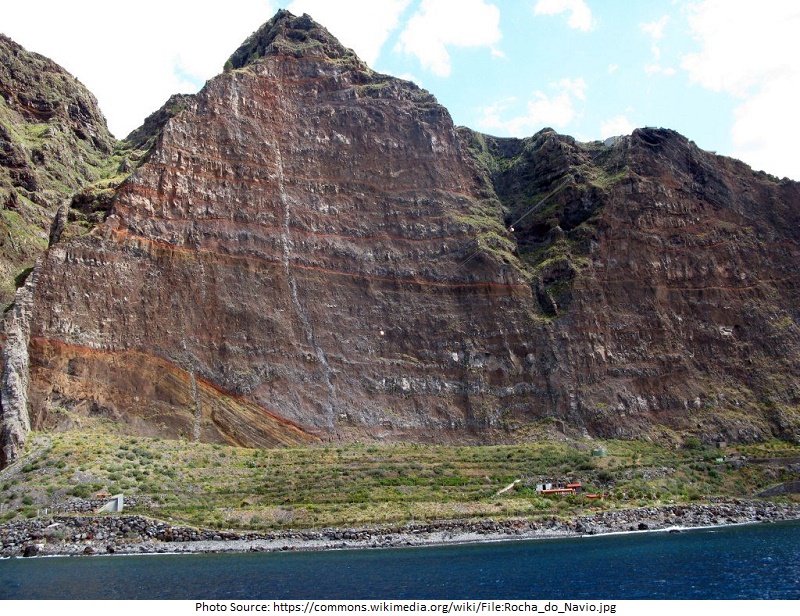25 Best Tourist Attractions to Visit in Iceland
1. Hofn

Bragging about a really scenic location on the tiny islets and slender peninsulas that linger in the Atlantic waters off the Hornafjordur, small Hofn is a major instance of a southern Icelandic fishing city. As one of the favourite entrances to the wilds of East Iceland and the Vatnajokull National Park, the area is a wonderful choice for tourists keen to explore into some of the country’s topmost natural sites, while a folk museum, the Ice Land Glacier Exhibition and disputably the finest lobster cafeteria in whole Europe make lingering here for a day or two an amazing way to get an atmosphere for the primitive, salt-washed vibe of the seagoing natives.
2. Thingvellir National Park
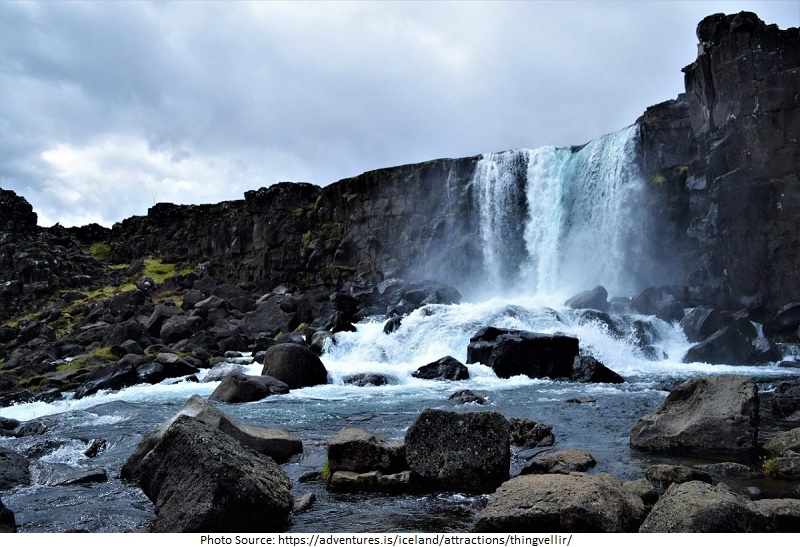
A symphony of volcanic rims and continental crevice, engraved canyons and the flowing streams of the strong Oxara River, the Thingvellir National Park is disputably the most wonderful natural territory in all of Iceland. Not only is it effortlessly approachable from Reykjavik, but also comes total with ancient sites like the Silfra fissure and the Peningagja pool, a rift lake that shines with coins dating back more than 100 years. Being a hiker’s dream, Thingvellir, braggs about arduous cliff walks and mountain ascending, while history and culture enthusiasts will love discovering the relics of the country’s foremost Viking age parliament – founded on this location in 930.
Tourist Attractions in Spain
3. Lake Myvatn
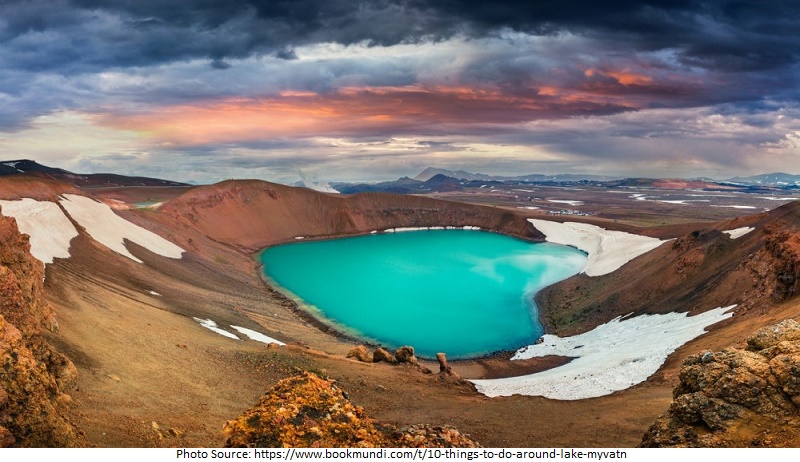
Located right east out of the so-called northern epicenter of Akureyri, Lake Myvatn provides with a really unworldly panorama that ranges from jagged craters to very odd volcanic plug openings to bubbling mud pools and more. It’s believed the lake came into existence following a volcanic eruption over two millennia ago, and now it’s loved by bird watchers, hikers, and adventurists alike. Topmost draws in the region include the Namaskard mud pools, the black lava block of Dimmuborgir, hike-able Vindbelgjarfjall at nearly more than 500 meters above sea level and the sulphuric Myvatn Nature Baths. Undoubtedly it’s one of the best tourist attractions in Iceland.
4. The Westfjords
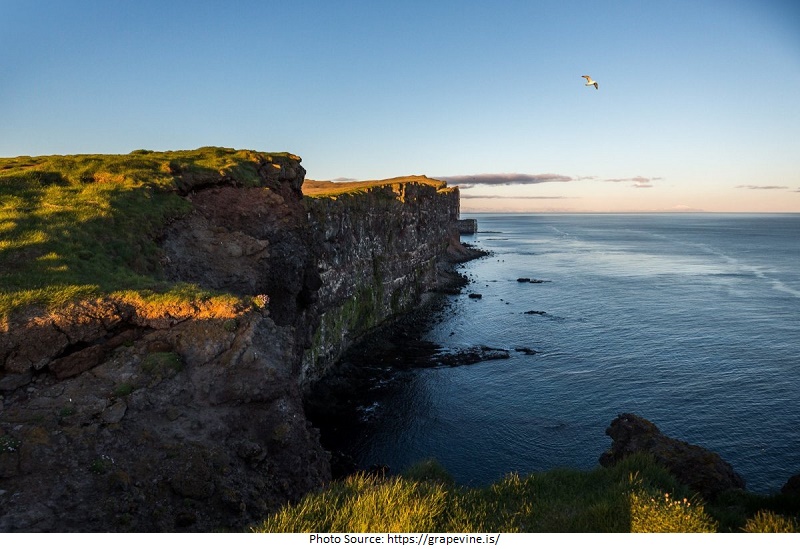
Craggy and protruding like fingers of rock and stone into the icy wheels of the Greenland Sea, the miscellaneous cirruses of the Westfjords peninsula are certainly amongst the most astonishing and admirable natural wonders in all of Iceland. It is one of the best touris attractions in Iceland. A wanderer’s haven, they come full with sites like the Hornstrandir reserve, with its Arctic foxes and seal pods, and the Latrabjarg (Europe’s westernmost tip if you don’t consider the Azores). Then there is illustriously-set Isafjordur, seen attached to a spit of sand on the verge of the ocean and bragging about a history dated back to the 9th century! Sea kayaking, cliff hiking and hitting the gleaming sands of Raudasandur are also all beloved.
5. Akureyri
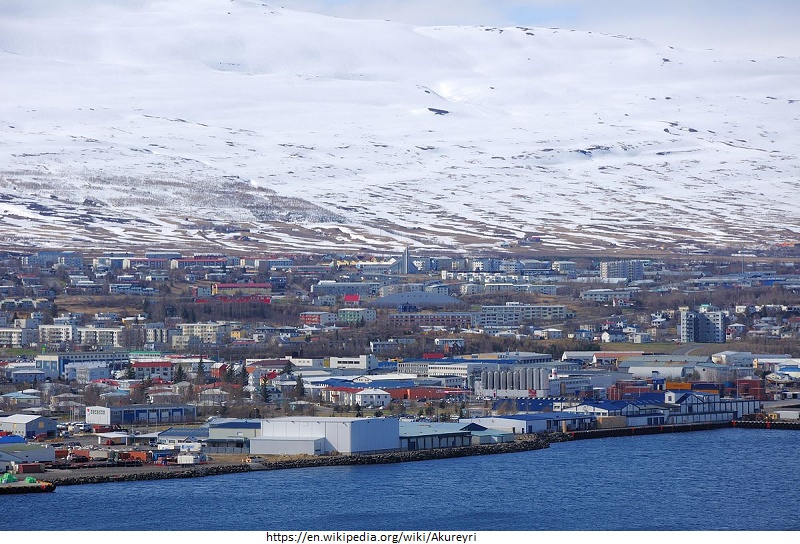
The self-declared epicenter of North Iceland can come as a true astonishment. In spite of its modest 18,000 people, this fishing port and a marine jewel of a town on the verges of the Eyjafjordur makes some crucial waves. Its center is filled with amazing independent cafes and teahouses, while the Hafnarstraeti shopping street provides with numerous boutiques and craft stores. In the meantime, the twin tower of Akureyri Church imitate the snow-capped tops that cover the city on all sides, and the native obsession for mayo-doused, chip-packed hamburger buns has today become a myth in its own goodness. Yes sir, Akureyri truly is worth the tour!
Tourist Attractions in Latvia
6. Skalholt
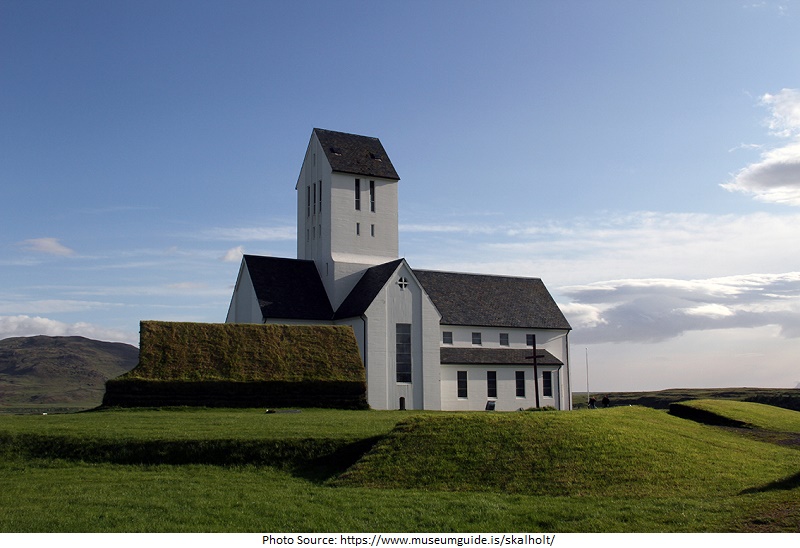
A lesser known area and often neglected for the southern region’s larger pulls – the Gullfoss Waterfall and the Golden Circle – Skalholt can be seen sitting on the rolling fields just on the verge of the Hvita River. Believe it or not, this little, snow-dusted middle in the wilds was literally one of the mightiest and significant locations in the country from the 11th century onwards and came to be greeted as the capital of Icelandic Catholicism. Now, the city is dignified by the bulky Skalholt Cathedral, which was essentially totally renovated in the 1900s, absolute with dignified Danish stained-glass slices.
7. Asbyrgi canyon
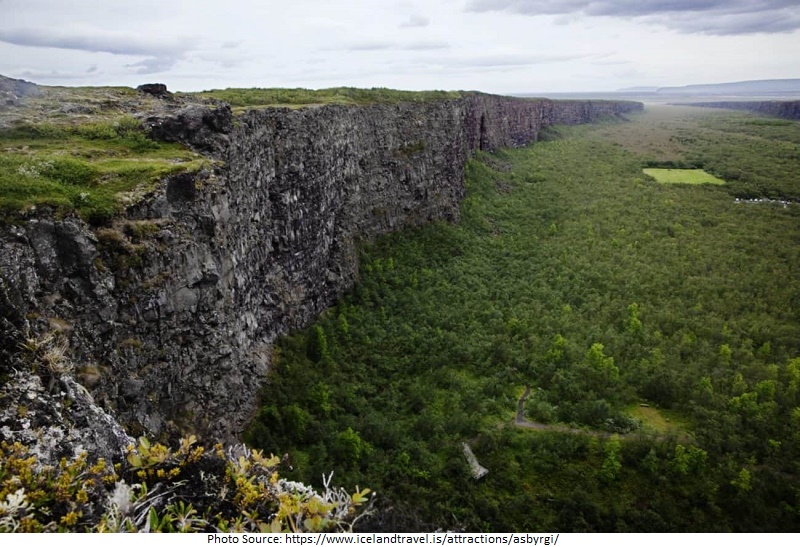
Carving its way out of the rocky inland of north-east Iceland, the chiseled canyons and rims of Asbyrgi hardly miss attracting a gasp. In all, the steep-sided verges of the canyon extend for over three kilometers and come in at an exhilarating 100 meters in height at some points. Hiking trails can be seen penetrating deep into the river-carved, glacial valley, weaving past tussock grasslands, willow, and birch woods and the old characteristics of Ice Age cliffs. The location is also covered in Norse legend; anticipated to have been formed by the footstep of Odin’s mythic horse, Sleipnir.
8. Borgarnes
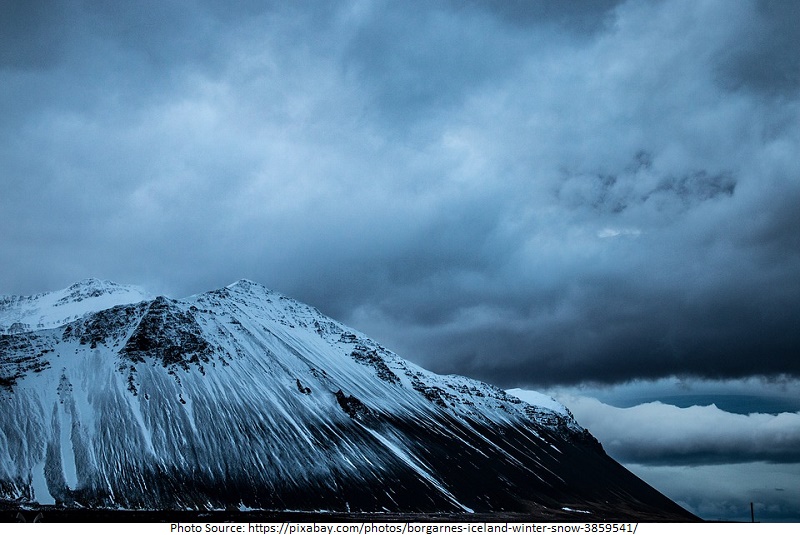
Its may just seem like a tiny dash of whitewashed wood in its locations sandwiched between the coastal plains, the protruding peaks of the Hafnarfjall massif and the waters of the Borgarfjordur a slight north out of Reykjavik. But this moderate fishing city on the verge of the sea literally has the mythic source, in the leaf of the Egils Saga, and afterward, the region became the economic trading center for all of west Iceland. That means tourists can hope for an array of shopping advantages and the likes of the Settlement Centre Museum, which records the earliest days of Borgarnes, all alongside the more noticeable attractions of the neighborhoods: coastal hiking; whale locating; those enduring hot springs!
9. Vatnajokull National Park
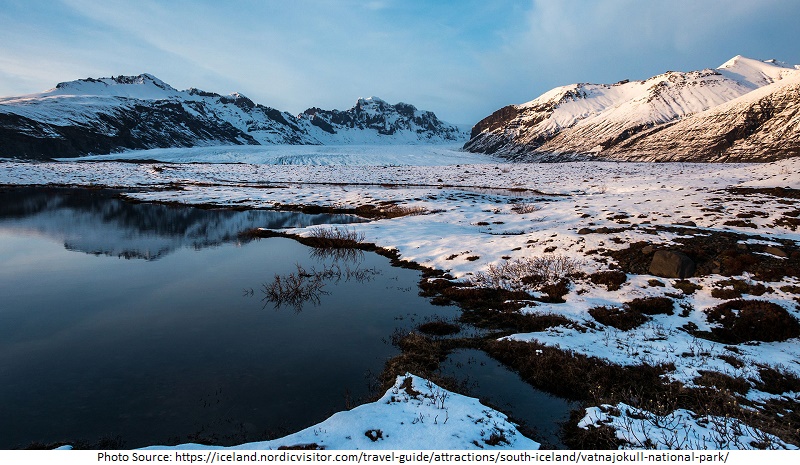
Topped by the pretended limitless ice fields of its titular glacier (the biggest on the continent outside of the Arctic Circle), the Vatnajokull National Park makes its abode over more than 13,000 sq km of south-east and central Iceland. It is one of the best tourist attractions in Iceland.The region is renowned for the extreme difference in landscapes, undulating from the flower-packed pasture and gushing waterfalls (don’t forget the renowned Dettifoss Fall!) that go through the Skaftafell lowlands (where there are also camping areas plentiful by summer) to the windswept, crevasse-cut glacial fields on the top of the mountain. The wetlands here houses nomadic reindeer, while strong Hvannadalshnukur (the country’s loftiest point) stands lofty and the uneven inner part of the Eldgja canyon exhibits some really wonderful volcanic geology – there’s plenty to watch! No doubt, it is one of the best tourist attractions in Iceland.
10. Reykjavik
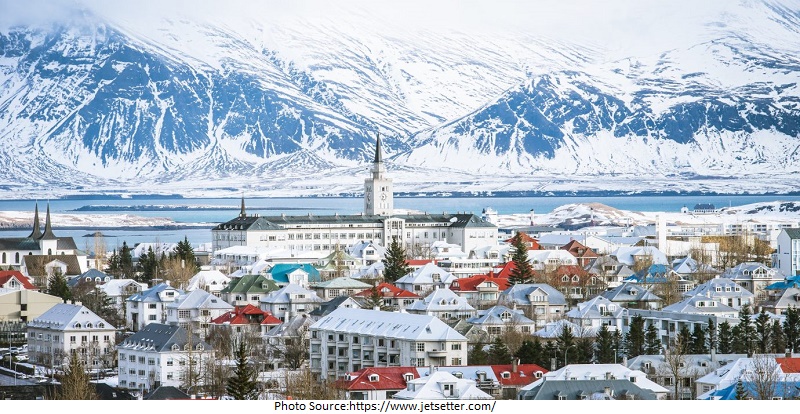
Once sophisticated and eccentric, epicurean and fashionable, Reykjavik packs one heavy punch for the northernmost capital town on the world. Its beautiful downtown of colored wooden abode is observed over by the towering and memorable needle-like steeple of the Hallgrimskirkja – today an authentic icon of the Icelandic city – while plenty of hearty Scandinavian vodka bars and pubs coalesce between the roads. Nearby, the charming Tjornin pool joins an aquatic edge to the city, while the Alpingi parliament edifice exudes 19th-century beauty and the center throbs with the likes of the National Gallery of Iceland, the Hafnarhus and the captivating old relics of the 871±2. Briefly, this one’s not to be missed!
11. Landmannalaugar
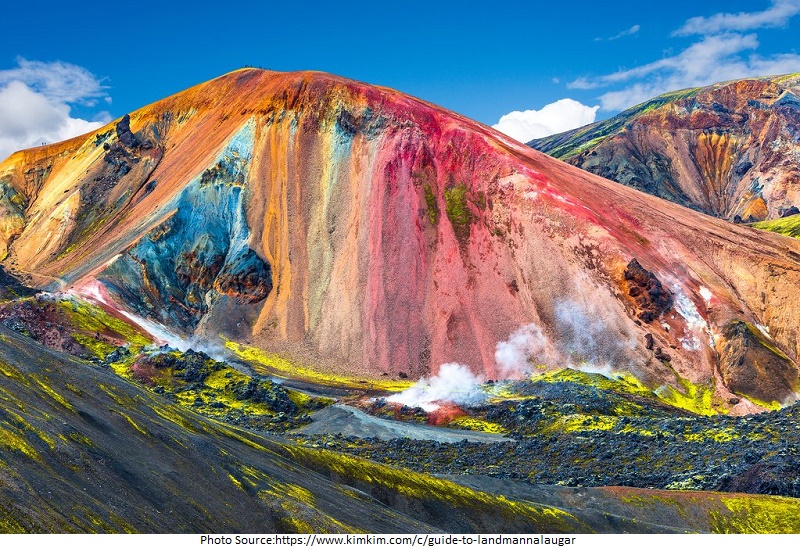
A big-cut valley set in the very center of south-western Iceland’s renowned Fjallabak Nature Reserve, the Landmannalaugar is a secret jewel of a destination that comes total with everything from bubbling volcanic warm springs to the ochre-colored mountain range. Hiking trails encompass the whole area, while a campsite just in the center of the Landmannalaugar and a distinct mountain hut provide outdoor lovers the base point they require for hitting the renowned Laugavegur trail. The piece de resistance of the region has to be the Brennisteinsalda peak though; a mixture of dark lava sheets and iron-colored, sulfur-spotted rims which is visible from the trail.
12. Myrdalsjokull Glacier Park
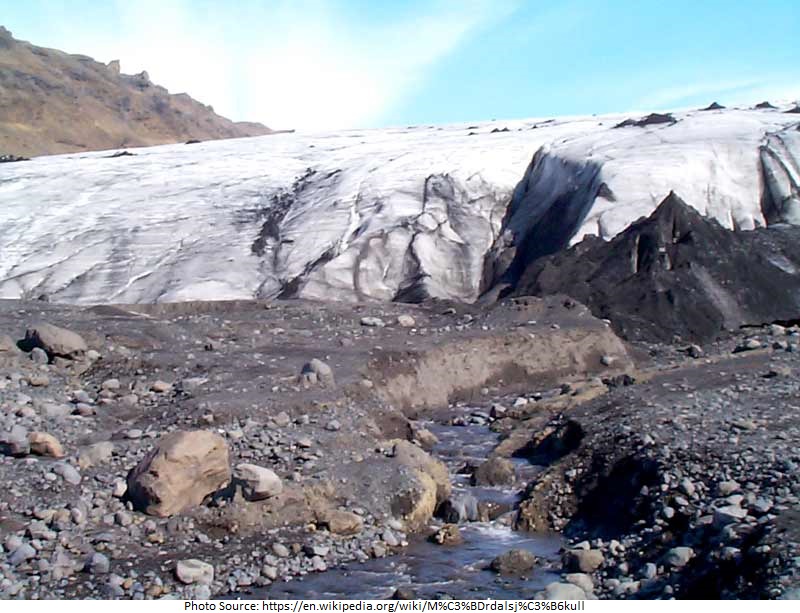
Caked in ice all over the year, the towering rims of the strong Katla caldera houses Iceland’s wild and polar Myrdalsjokull Glacier Park. This snow-stuffed field surrounds hundreds of square kilometers and presents the fourth-biggest of its type in the country. It’s familiar for its unworldly characteristics, as lush peaks poke their way out above the ice-packed valleys, metamorphic creations gather above the cracks and sudden sand pools lurk on the verges of Solheimajokul – one of the most obvious effects of the Myrdalsjokull Glacier. Guided trekking is uber-beloved on this spot, with sites like the Fimmvorduhals pass and the rims of Eyjafjallajokull both providing adventurous entrances.
13. Grundarfjordur
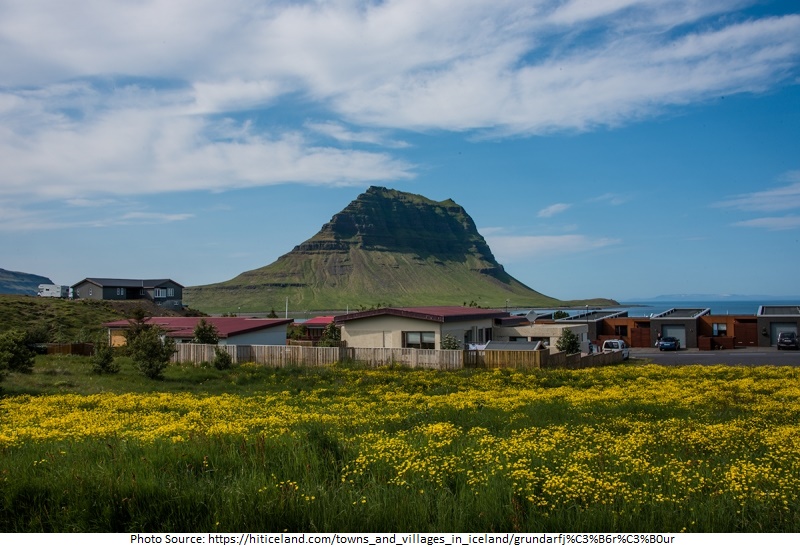
The tiny and quiet fishing city of Grundarfjordur makes its abode on the ice-caked verge of the Snaefellsnes Peninsula, where some of West Iceland’s most strange coastal development fringe their path up to the waters of the Greenland Sea. And while trekking and cliff hiking are plentiful in the neighboring national park and Grundarfjordur itself is familiar for its earthy summer folk carnival courtesy of the regional Viking Foundation, the city is undoubtedly most famous as the beginning point for seeing (and photographing for most) the impressive profile of Mount Kirkju fell , which sway like a rocky shark fin in the middle of the waterfalls and caverns of Snaefellsnes.
14. Gullfoss Waterfall

Tourists will see the awesome Gullfoss Waterfall gushing over the slopes and ridges of south-western Iceland. It’s famous as one of the most scenic cataracts in the world and cascades over a series of stepping stones and patios before diving over the 32-meter high crack that gives the fall its unique appearance of disappearing into the Icelandic subterrane. The falls themselves can often be seen arched over by rainbows or covered in feathers of mist, while by summer, the nearby hills and bluffs come clad in a lush covering of grass that forms a fine canvas for hiking around the verges of the Hvita River.
15. The Blue Lagoon
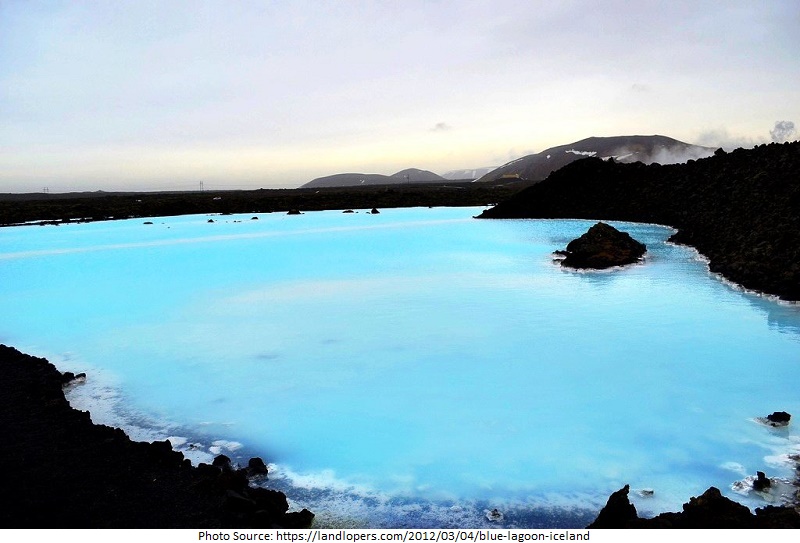
Bubbling and vaporing amidst the rocky cliffs of the Reykjanes Peninsula nearly 40 kilometers from the island’s epicenter at Reykjavik, the Blue Lagoon hails in as one of Iceland’s most traveled tourist attractions. In spite of its volcanic nature, the spot is literally very young; created from the unused plugholes of a geothermal power plant in the 1970s. Still, the spot amidst the bluffs around Grindavik is really captivating, while the waters come loaded with minerals – the cause for the glowing, whitish color of the lagoon and the driving energy behind the location’s famous healing capacity. Tourists to the lagoon can also experience in-water massages, guided trips of the strange geothermal region and luxury lounge advantages besides.
16. Hornstrandir Nature Reserve

When it comes to watching Iceland in its natural distinction, no area matches the intact wilderness of the Hornstrandir Nature Reserve in Westfjords. While it’s real that its rugged terrain of rocky mountains and diving sea bluffs represents challenges, the Hornstrandir the perfect location for nature-lovers and adventurers. With no stores or services within the reserve, however, trekkers need to come with full supply for any emergency. High on your enlisted destinations for trekking lovers is the Hornbjarg, a sky-high sea bluff situated on the northernmost point of the reserve. During the summer, guided trips are available that let you explore this top-of-the-world feeling in relative security and comfort.
17. Husavik
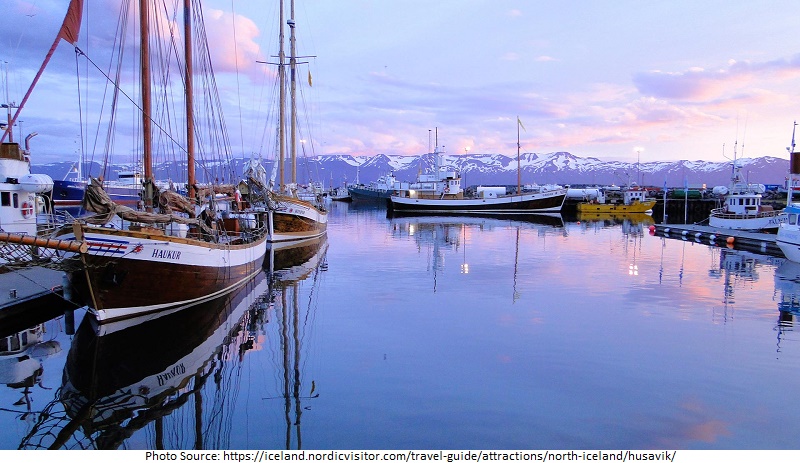
A small fishing village located within a protected cavern in northern Iceland, Husavik is rapidly gaining fame as one of the finest locations in Europe for whale locating. The most familiar species located from the trip boats include minke, humpback and blue whales along with white-beaked dolphin and port porpoise. With some life-sized skeletons on exhibition, the Husavik Whale Museum provides a wealth of information about whales and also records the history of whaling in Iceland. The beautiful timbered church of Husavikurkirkja established in 1907 is worth a swift trip as well.
Tourist Attractions in San Marino
18. Jokulsarlon
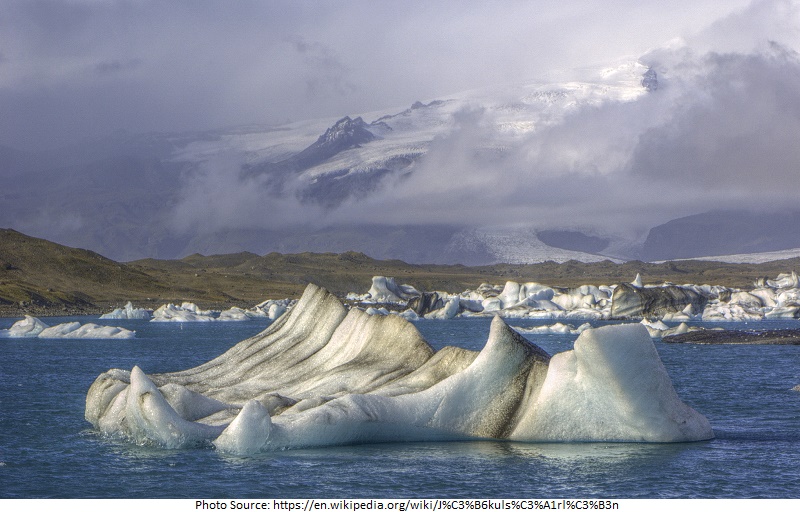
Few voyages in Iceland are more unforgettable than the vision and sound of an iceberg cracking off a glacier and wrecking into the sea. The finest spot to experience this exhibition of nature’s strength is at the Jokulsarlon Glacier Lagoon. Situated in southeast Iceland, this iceberg-dotted lake was created by the dissolving ice of the Breidamerkurjokull glacier, which is a key draw in its own virtue. While you can see the lake with its slow-going drifting icebergs from the island’s Ring Road, nothing compares to finding them up near from the deck of a trip boat.
19. Golden Circle Root
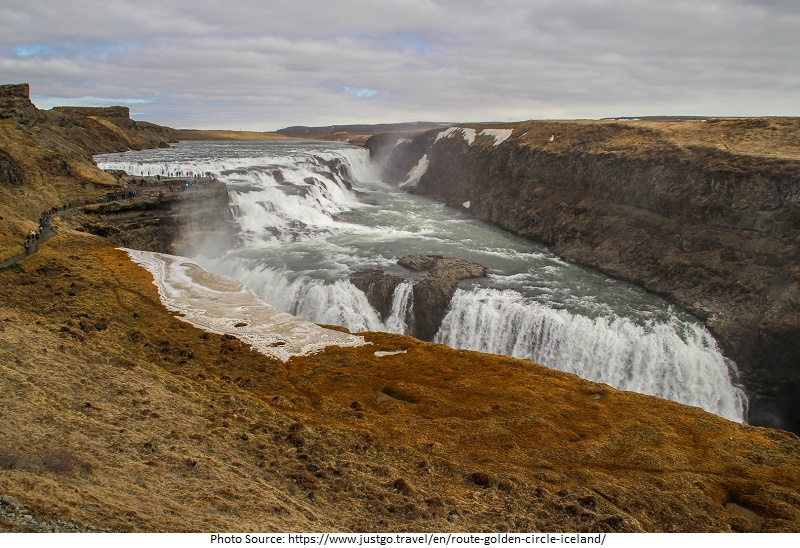
The area just east of Reykjavik has a fascinating experience of Iceland’s unique attractions, including historic spots, eccentric villages, geysers, and waterfalls. Multiple trip companies provide day-long expedition through the region along the streets and highways that are familiar collectively as the Golden Circle Route. The most beloved trips have halts at Gullfoss, where the colossal “Golden Falls” rush through the Hvita river canyon, and the Geysir warm springs, the location where the word “geyser” earned its name. Spotting the spot where the nation of Iceland was established in 930, old Þingvellir is usually included in the trip as well.
20. Kirkjufell and Kirkjufellfoss Waterfall
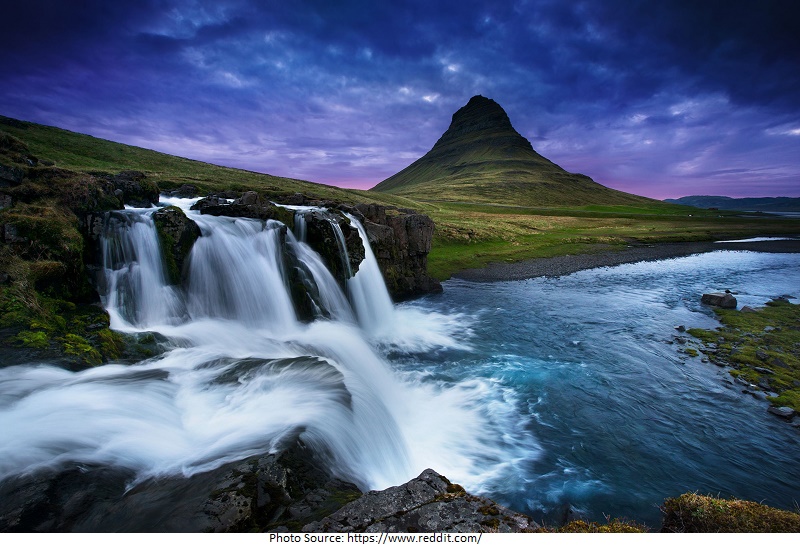
(Church Mountain) is the most captured by photographers in Iceland and a natural symbol on its own. Situated next to the little town of Grundarfjörður, it ascends 463 meters above sea level in an abnormal, extended, conical shape; that has become the charming landmark not only of this city but of all Iceland too. There is a hiking trail indicating to the summit, which takes nearly one hour and a half each way. In front of Kirkjufell Mountain, is located Kirkjufellsfoss, which interprets Church Mountain Waterfall. The word “foss” means waterfall and you’ll see plenty of it here. The mixture of falls, secluded mountain, the panoramic seasides, and wonderful sunset clouds makes this a fantasy spot for photographers.
21. Snaefellsjokull National Park
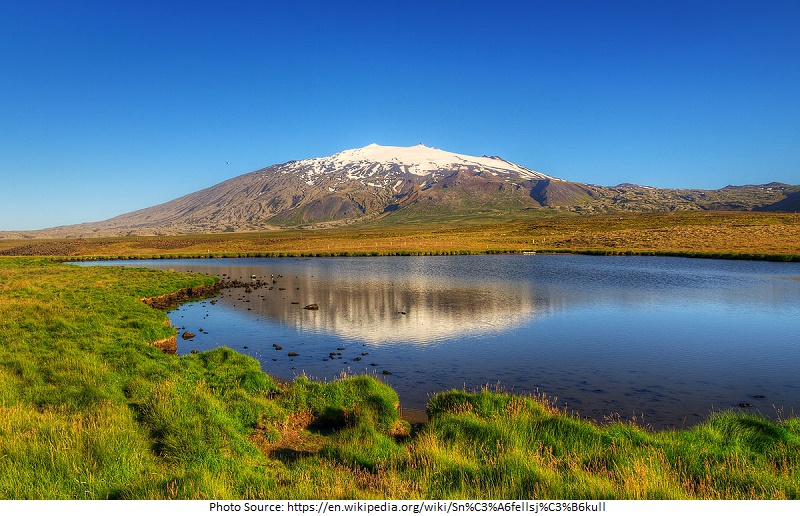
Snæfellsjökull National Park is located on the western tip of the Snæfellsness peninsula and is abode to the most renowned volcano in Iceland, Snæfellsjökull – the culminating jewel of the park itself. Apart from the volcano, you can find other wonderful locations in the park like Djúpalónssandur beach, Saxhóll volcano crater, Lóndrangar (the two immense lava establishment), Sönghellir (the singing cavern), and Rauðfeldargjá (the secret waterfall), among others. Due to its nearness to Reykjavik (nearly. 2 hours drive each way), it is one of the most traveled parks in Iceland. You can go around the park and Kirkju fell in a day.
22. Dynjandi Waterfall
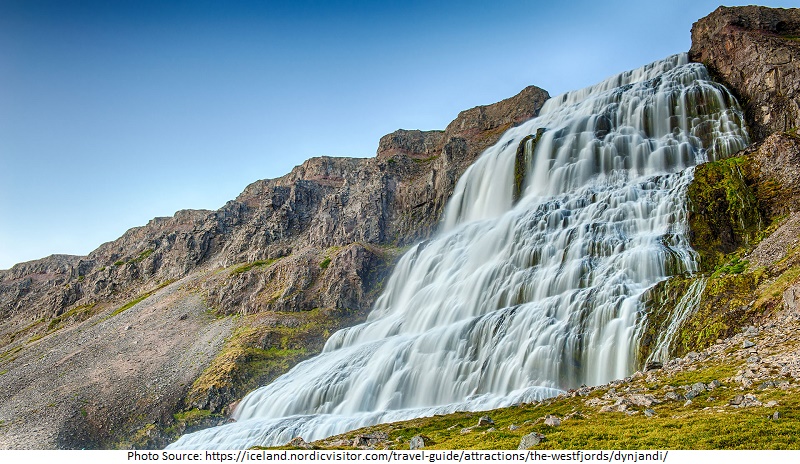
Dyn jandi waterfall is not only the largest waterfall in the Westfjords, but it is also one of the most charming in the country. The word “Dynjandi” interprets “thunderous,” and literally you can experience the thunderous sound when you’re standing just at the foot of the falls. Dynjandi falling a total of 100 meters, which is then trailed by six little falls until it attains the sea. Separate from most falls in Iceland, Dynjandi doesn’t go down in a free fall column, but gently gushing through the stones, spreading its aquatic cloak from 30 meters at the top to 60 meters at the bottom. See the sunset from there. Not only does the waterfall look stunningly illuminated in orange colors, but also the sunset itself is amazing.
23. Rauðisandur Beach

Red beach is a charming, distant red sand beach in the Westfjords. It extends over nearly 10 km from Látrabjarg bird-cliff in the west towards Skorarhlíðar mountainside in the east. How red the sand looks determined by the light of the day. It can differ from white to orange, yellow, and very red. But, whether it appears red or not, it is a gorgeous view not to be missed. Unlike maximum beaches that are an individual, long range; Rauðisandur is made of big, undisciplined patches of sand encompassed by not deep emerald green water. What’s even stranger are the sheep residing at the beach! The road guiding to the beach is an arduous gravel road, so extreme care must be taken while going since it passes through several risky curves and cliffs. Some say this is the most dangerous way in Iceland.
24. Svartifoss Waterfall
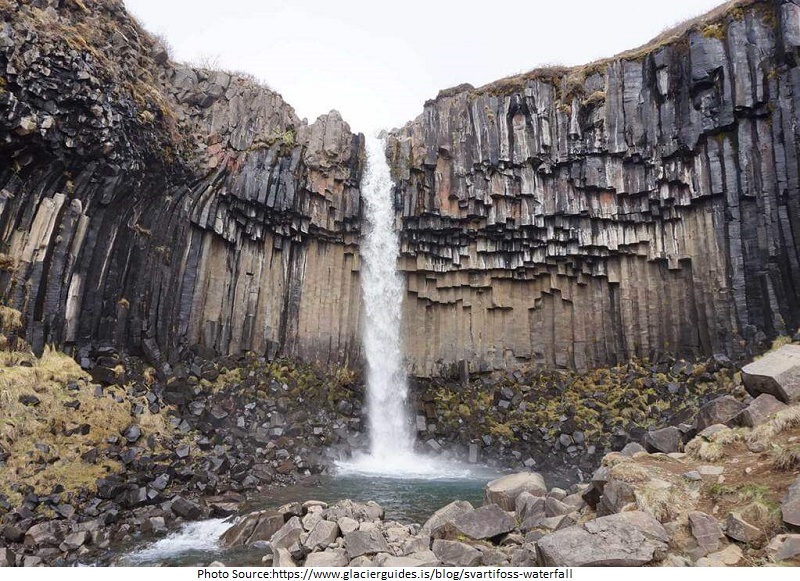
Svarti foss (Black Fall) is among the most renowned waterfalls in the country. Actually, it was the motivation beyond the iconic Hallgrimskirkja church in Reykjavik. The waterfalls nearly 20 meters in front of a natural canvas formed with black basalt columns. To attain it, you must trek about 45 minutes each way from Skaftafell’s access point.
25. Dettifoss Waterfall
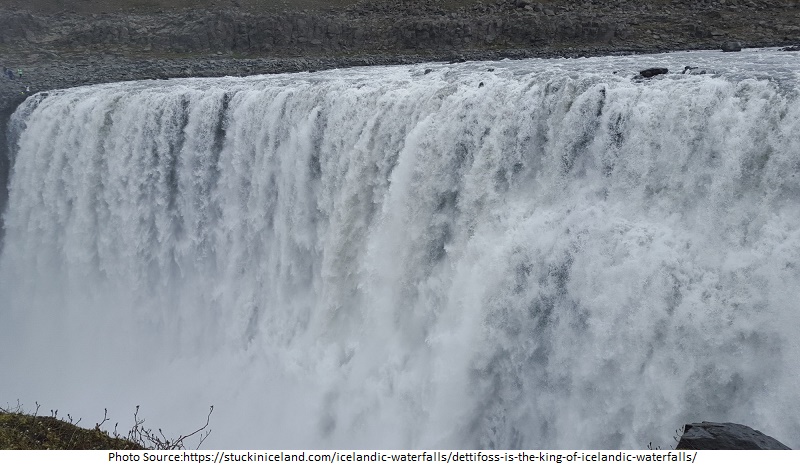
Detti foss, situated in Vatnajökull National Park in the Northeast region of Iceland, is the mightiest waterfall in Europe. Dettifoss is located on the Jökulsá á Fjöllum River and falls 45 meters down to the Jökulsárgljúfur canyon. Its drop is 100 meters broad, making it the biggest waterfall in Iceland according to volume release, having a mean water flow of 193 m3/s.


